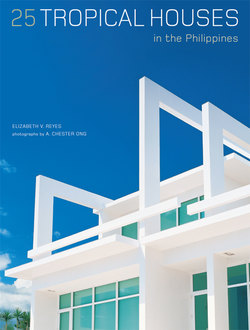25 Tropical Houses in the Philippines

Реклама. ООО «ЛитРес», ИНН: 7719571260.
Оглавление
Elizabeth V. Reyes. 25 Tropical Houses in the Philippines
Отрывок из книги
Atrium house, Valle Verde, Pasig, Metro Manila (page 82), architect Eduardo Calma.
Tengco townhouse, Forbes Park, Makati City, Metro Manila (page 66), designers Budji Layug and Royal Pineda.
.....
As with design in most post-colonial countries, this identity has been over half a century in the making. For 300 years, the Philippines was under Spanish rule, followed by close to another fifty under the Americans. House design during this time was largely in the vernacular tradition, save for the residences of aristocrats in the cities. The Spanish house was adapted as the bahay na bato (literally "house of stone," but in reality stone on the ground floor and timber above), a vernacular house with Western-influenced architectural dress made more permeable to cooling winds and protected from the sun and rain. With the Americans came reinforced concrete and multistory apartments, mainly constructed in the Art Deco style, and bungalows in a gamut of revivalist styles, among them Italianate, Swiss Chalet, and Mission. A few schooled local architects, like Juan Arellano and Juan Nakpil, picked up where the Americans left off and carried residential design into the new urban morphological form of the suburb and residential subdivision or gated community.
As the 1950s brought independence to many Asian countries, each sought to strengthen its national identity in various ways, including through architecture. Modern architecture had, however, already established a firm foothold through the influence of local architects trained abroad. Frank Lloyd Wright, Le Corbusier, and the Bauhaus School influenced postwar architects to adopt flat roofs, bands of windows, and piloti (stilts) for buildings. Residential architecture in the Philippines took the form of California ranch homes and Japanese and Hawaiian themed bungalows. It was only in the 1960s, when nationalism reared its head, that architects such as the Mañosa brothers, Felipe Mendoza, and Otilio Arellano sought to rediscover both their cultural roots and the tenets of vernacular design. These architects mined traditional roof shapes and embellishment patterns, mainly from the southern islands of the Philippines with strong Islamic influences.
.....